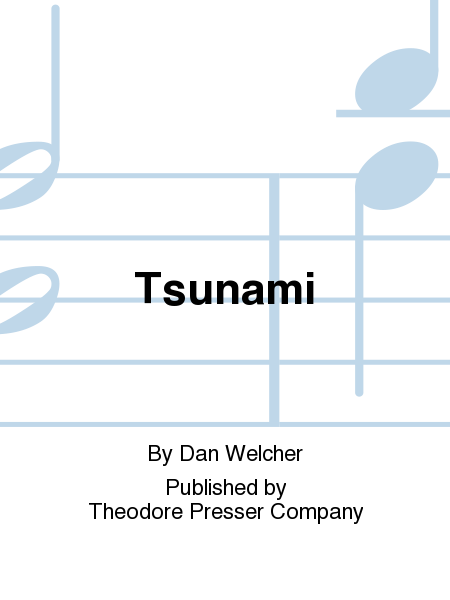Details
Description
SKU: PR.164002130
Composed by Dan Welcher. Set of Score and Parts. With Standard notation. 37+14+23 pages. Duration 11 minutes. Theodore Presser Company #164-00213. Published by Theodore Presser Company (PR.164002130).UPC: 680160037612.
The unusual combination of cello, percussion and piano seems more incongruous than it actually sounds. When I first heard the ensemble Aequalis, in a full evening program I was absolutely astonished at the combination of lyricism, pulse, and color. Something about the mix causes the cello to sound marimba-like, the vibraphone to imitate the cello's harmonics, and the piano to become a kind of proto-orchestra of colors and effects. Tsunami was written for Aequalis in the summer and fall of 1991 with the assistance of a grant from Chamber Music America. The title, the Japanese word for tidal wave (which is a misnomer -- tsunamis have nothing to do with the tides), refers to the phenomenon of an undersea disturbance causing a huge wall of water to flood the first land in its path. The initial earthquake or volcanic eruption that sends a seismic shock through the water is invisible -- it's only when that shock wave hits land, recoils, and takes ocean swells back with it, that the wave begins to form. In successive landings, recoilings, and re-landings, this force finally spends itself, usually inundating anything in its path, sometimes to a depth of one hundred feet or more. My piece does not attempt to depict this natural cataclysm -- how could it, with three instruments? -- but the form of the first half of the work is based on it. The initial percussive shock that opens the piece creates a stir in the form of a cello motive marked swelling and employing long portamenti pushing upwards. After a second shock, the cello motive begins an undersea journey -- very slow and lyrical at first -- accompanied by non-pitched percussion only. Eventually the piano joins, first with echoing bass notes, then with a rather mechanical motive high on the keyboard. This force grows, the cello line climbs higher and higher until another double-shock is heard -- perhaps the energy has hit land? Following this, the percussion becomes melodic (marimba), and we now have two lines in canon accompanied by a separate line in the piano. This, too, builds to a climax, and an even louder and more vigorous shock results. Now the texture is a three-way canon with cello, vibraphone, and piano chasing each other in ever faster cycles of sound. The height of this is a triple cadenza in which all three players spend their pent-up energy, one at a time. The second part of the piece follows after a settling-down, and is marked Dancing. This is a rondo, with a recurring theme (heard first in the marimba) followed by three contrasting sections heard between reiterations of the main tune (the form could be diagrammed A-A-B-A-C-A). The mood is one of joyous kinetic energy, with elements of Eastern or Balinese gamelan sounds, and employing several pentatonic scales (as does the first half of the work). It ends in a vigorous, stomping dance. --Dan Welcher .

 Share
Share